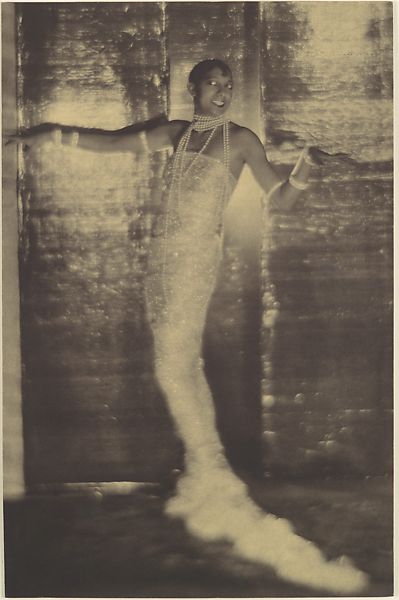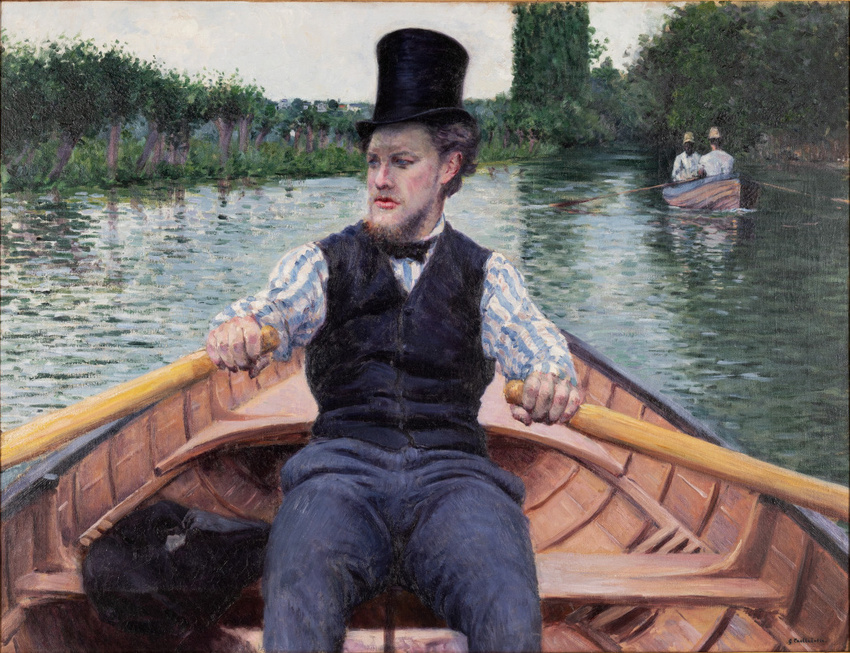Of the poor, pathetic phantoms of the past, a faint memory of the day before yesterday, the Baron de Meyer is forgotten today by all but a few who still appreciate the contributions he made to this time in Vogue’s pages, where his best work appeared.
Cecil Beaton
As a pictorialist photographer, the Baron Adolph de Meyer (1868-1946) focused on creating images that could rival the artistic qualities of painting, and also raise the reputation of photography to more than a mere mechanical representation of a scene. The sophisticated and gifted amateur who turned professional and worked for the likes of Vogue and Harper’s Bazaar, completely changed the course of history for portrait photography and fashion magazines alike. Despite his achievements however, as Cecil Beaton points out, he remains a largely forgotten and uncelebrated figure within the history of photography.
Born in Paris but growing up mostly in Germany, de Meyer was of a German-Jewish and Scottish aristocratic background. In 1899 in London, he married the beautiful socialite and artist’s model, Olga Caracciolo. Although a loving relationship, it was also one of convenience. He was homosexual, and Olga either bisexual or lesbian, as well as being the goddaughter and possibly even illegitimate daughter of Edward VII. They lived surrounded by London’s high society. Amidst the grand parties and artistic circles they enjoyed a certain amount of freedom, until the aftermath of the Oscar Wilde scandal and the onset of World War I prompted them, and many others, to escape Europe. As a result, the de Meyers moved to New York in around 1913 where Adolph became the first staff photographer for Vogue, and also appeared in the sister publication Vanity Fair.
Up until the early twentieth century, images in fashion magazines were either produced from drawings or rather formulaic and uninspiring studio photographs. These shots normally comprised of painted backdrops, generic poses, and natural daylight or studio lighting which provided an evenly lit space throughout the scene. With treating photography as a form of art, de Meyer’s expert darkroom printing techniques and understanding of light, texture and tone, allowed him to move away from this previous format. Through this shift, it was he who invented the genre of fashion photography which paved the way forward for the more eye-catching imagery that we know today. He regularly experimented with creative, artificial backlighting, and he often used diffused lighting by stretching gauze over the camera lens. Differential focusing was also a regular tool, where the centre of an image could be sharp and in focus but leading to a graduated softening around the edges.
One image which clearly demonstrates some of these techniques is that of Josephine Baker, taken c1925 (below). Baker was an entertainer, civil rights activist, and a French Resistance operative during World War II. In this photograph, she is framed within a highly reflective backdrop which complements the sparkling dress and pearls. The dreamy and atmospheric effect is also accentuated by much of the bottom half of the image being in soft focus. From her facial expression, the image seems to capture a slightly unusual moment in her comedic stage personality, indicating with little certainty of what may have happened just before the shot was taken.

Direct carbon print, 45.2cm x 29.5cm, The Met Museum, New York
In an essay on de Meyer, Anne Ehrenkranz suggests that Baker was one of the numerous women photographed by the artist who were starting to experience the freedom and sexuality of a new and uneasy age; and in portraying them he adopted a similar approach to the artist Gustav Klimt of emphasizing the psychological condition, and often with a distinctive linear style. There is a definite similarity between this image and the many full-length paintings executed by Klimt during the early twentieth century. Portraits such as those of Gertrud Loew (below) and Emilie Flöge, both from 1902, are prime examples of this. Female sitters, often with signs of inner turmoil or struggle apparent in their faces, are framed within elegant settings or reflective backdrops. With a familiarity of Klimt’s work, it’s very likely de Meyer would have been thinking of elements from these paintings when capturing the long, slimline dress of Josephine Baker.

Oil on canvas, private collection
Some of de Meyer’s best work featured a distinctive luminous effect, which was something very new to fashion and portrait photography at the time. A master of his trade, he would fix silk over his filters, drape his female sitters in satin or transparent materials, spill buckets of water on marble flooring, or even spray flowers with artificial dew. In the 1921 image of Jeanne Eagels used in Vogue magazine (image at top), the French actress is seen leaning across a table staring intently towards a vase. Backlighting provides highlights to the hair and the outline of her face, whilst additional lighting creates a strong reflection on the vase and transforms the plant into a beacon of luminosity. From a contemporary viewpoint, we could say there is a gay sensitivity at work here. Perhaps aided by his sexuality, de Meyer understood the delicacy and femininity required to produce a photograph such as this. The image is converted into a fairy tale scene with both Eagels and the viewer transfixed on the plant. An article in The Craftsman magazine from 1914 explains that ‘he deliberately focuses his camera not upon the sparkle of an eye but upon the light that illuminates the eye’. Although not referring specifically to this image, it does give a clear idea of the thinking behind de Meyer’s creativity, by observing and reacting to the effect of light on different surfaces.
Having returned to Paris in the 1920s to work for Harper’s Bazaar where he enjoyed greater control over the images he produced, by the 1930s a harder edged style of fashion imagery had emerged. De Meyer was eventually replaced at the magazine as his photography was considered outdated. He later questioned whether his commitment to commercial photography was a failure to his art. Olga passed away in 1931 and Adolph went back to the United States before the outbreak of World War II. Usually reported as being either his partner or his adopted son, de Meyer then lived with the much younger German, Ernest Frohlich, until his death in 1946. Always tinged with a little sadness, considerable flair, and a lot of mystery, de Meyer’s life and work continues to fascinate me. Both Adolph and Olga de Meyer are certainly figures I expect to return to regularly in the future, for further research and writing.
Sources
Beaton, C. (2014). The Glass of Fashion: A Personal History of Fifty Years of Changing Tastes and the People Who Have Inspired Them. New edn. New York: Rizzoli Ex Libris.
Ehrenkranz, A. (1994). Essay. In: Ehrenkranz, A. Hartshorn, W. and Szarkowski, J. A Singular Elegance: The Photographs of Baron Adolph de Meyer. San Francisco: Chronicle Books, pp. 13-49.
The Craftsman (1914). The Artist’s Wonder-Stone: How Baron de Meyer Sees Modern Spain. The Craftsman, October 1914, pp. 46-52.

